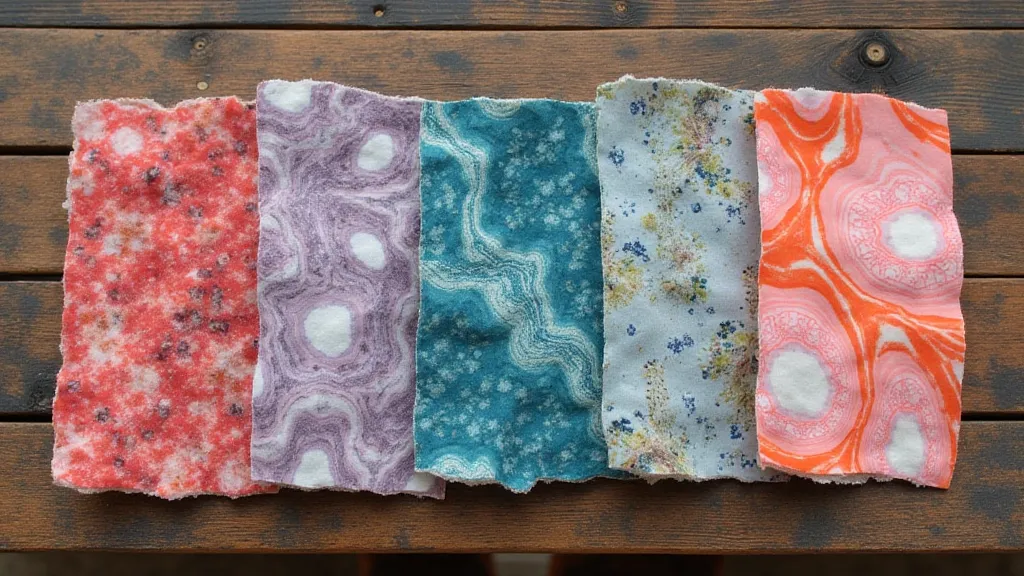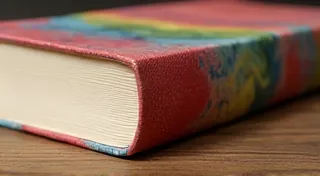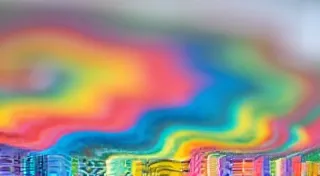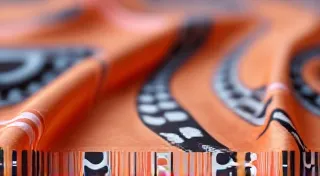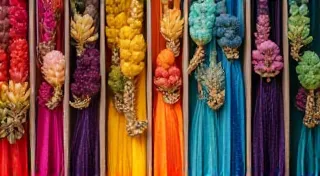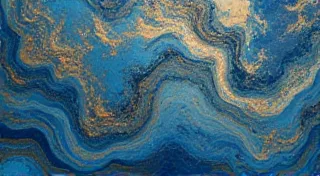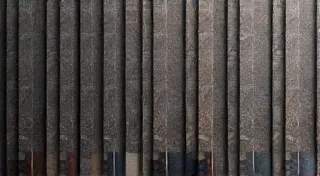Sustainable Paper Marbling: Eco-Friendly Practices
Paper marbling, with its mesmerizing swirls and unique patterns, is an ancient art form that feels both magical and deeply satisfying. While the process itself can be incredibly relaxing, the materials traditionally used can sometimes have a significant environmental impact. Fortunately, embracing sustainable practices in paper marbling isn't just possible, it can actually enhance the artistry, connecting you more deeply with the natural world that inspires these beautiful designs. This guide explores how to practice paper marbling in an eco-friendly way, covering everything from natural dyes to reducing waste and choosing responsible paper.
The Environmental Impact of Traditional Marbling
Traditionally, paper marbling relies heavily on synthetic dyes and certain chemicals for thickening the carrageenan solution. Synthetic dyes, while vibrant and readily available, are often derived from petroleum and their production can involve polluting processes. Carrageenan itself, while a natural substance, is often sourced from large-scale aquaculture operations which have their own environmental considerations. Paper, of course, is a resource-intensive product to manufacture. Understanding these potential impacts is the first step toward creating a more sustainable marbling practice. The history of paper marbling is rich and spans cultures around the world; exploring this history of paper marbling can further appreciate the evolution of techniques and materials used throughout the ages.
Embracing Natural Dyes: A Rainbow from the Earth
One of the most significant changes you can make is switching to natural dyes. The color palette derived from nature is surprisingly vast and versatile. While achieving the exact same hues as synthetic dyes may require experimentation and a deeper understanding of mordanting (explained below), the results are often richer, more nuanced, and far more sustainable.
Common Natural Dye Sources:
- Fruits and Vegetables: Beets (red/pink), blueberries (blue/purple), spinach (green), turmeric (yellow), avocado pits (pink/purple), onion skins (yellow/orange).
- Flowers: Marigolds (yellow/orange), hibiscus (red/purple), rose petals (pink/red).
- Other Plant Materials: Walnut hulls (brown), coffee grounds (brown), tea (tan), madder root (red).
- Minerals: Iron (rust) can be used, but requires careful control to avoid damaging the paper.
Mordanting: Natural dyes often require a mordant to help them bind to the paper fibers. A mordant is a substance that acts as a bridge between the dye and the paper. Common natural mordants include alum (potassium aluminum sulfate), tannin (found in oak galls, sumac leaves, and tea), and vinegar (acetic acid). The type and amount of mordant used will significantly impact the final color. Experimentation is key!
Important Note: The color intensity and fastness (resistance to fading) of natural dyes can be influenced by water quality, pH levels, and the type of paper used. Proper documentation of your dyeing process is crucial for replicating successful colors.
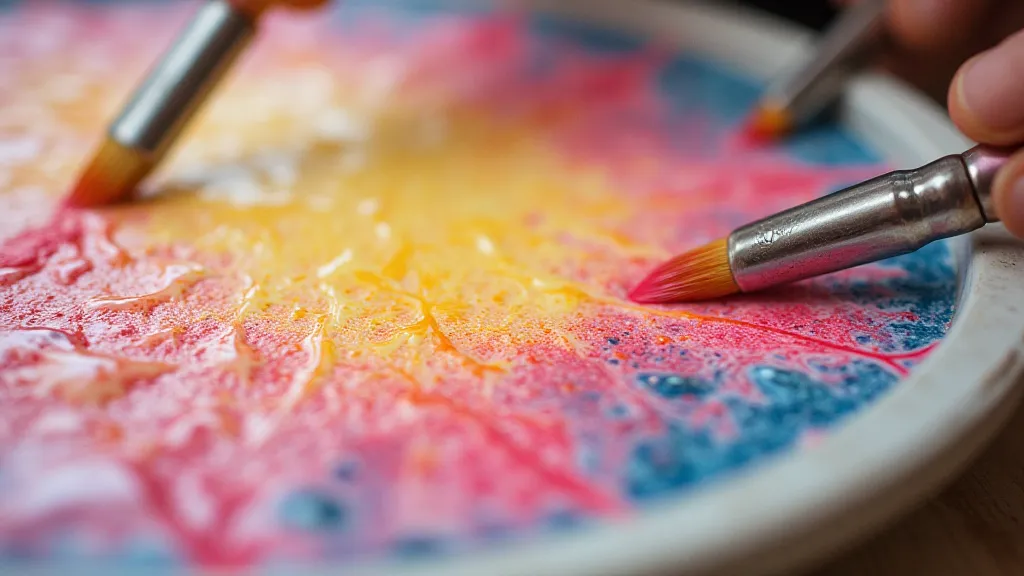
Sustainable Paper Choices
The paper you choose for marbling also contributes to the overall environmental impact. Consider the following:
- Recycled Paper: Look for paper with a high percentage of post-consumer recycled content. This reduces the demand for virgin pulp, conserving forests and reducing energy consumption.
- Tree-Free Paper: Explore alternatives made from sustainable plant fibers like bamboo, hemp, or cotton rag. These materials often require less water and fewer pesticides to grow than traditional tree-based paper. You might be interested in learning how marbling on fabric works, as the principles of paper selection apply similarly.
- FSC-Certified Paper: The Forest Stewardship Council (FSC) certification guarantees that the paper comes from responsibly managed forests.
- Cotton Rag Paper: While traditionally luxurious, cotton rag paper is durable and often made from recycled cotton fibers.
Reducing Waste in Your Marbling Practice
Even with sustainable materials, waste can still be an issue. Here are some strategies to minimize it:
- Reuse Your Marbling Bath: The carrageenan bath can often be reused multiple times, although the colors will gradually fade. Carefully strain the bath after each use and store it properly.
- Salvage "Failed" Prints: Even prints that don't turn out exactly as planned can be used for other projects, such as collage, decoupage, or mixed media artwork.
- Compost Dye Scraps: Vegetable and fruit-based dye scraps can be composted to enrich your garden soil.
- Use Reusable Tools: Opt for brushes, combs, and other tools made from natural or recycled materials.
- Minimize Water Usage: Be mindful of water consumption during rinsing and cleaning. Collect water for other uses when possible.
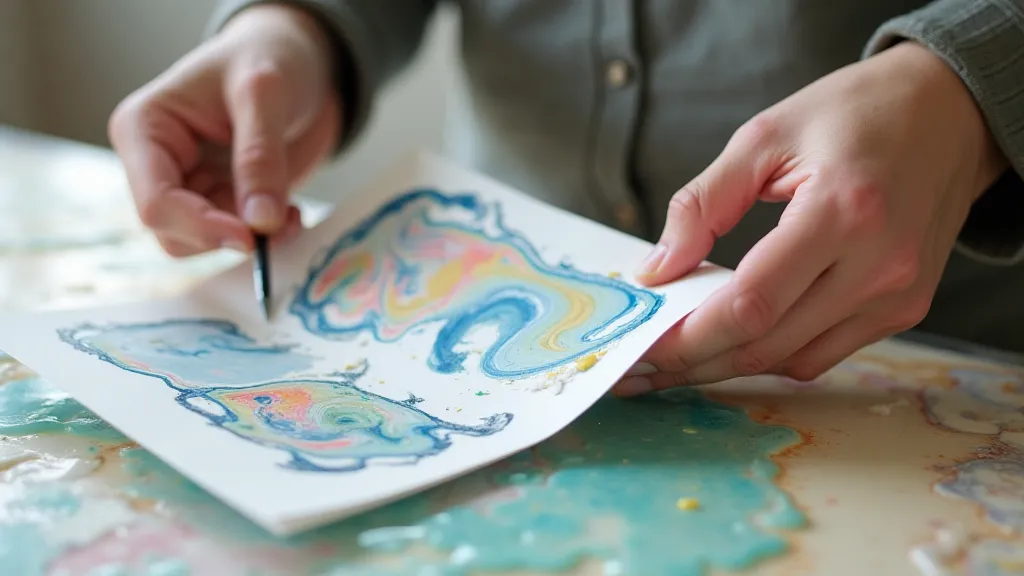
Exploring Alternative Thickening Agents
While carrageenan is the most commonly used thickening agent, exploring alternatives can further reduce your environmental footprint. Some options include:
- Flaxseed Gum: A natural polysaccharide derived from flax seeds. It produces a thinner, more fluid marbling bath.
- Cornstarch: Can be used as a thickening agent, but may require experimentation to achieve the desired consistency.
- Potato Starch: Similar to cornstarch, potato starch can be used as an alternative.
Important Note: These alternatives might require different application techniques and may affect the marbling pattern.
The Art of Ekri: A Turkish Perspective
Beyond the fundamental principles of sustainable marbling, delving into diverse cultural approaches can further inspire creativity. The Turkish art form of Ekri paper marbling, also known as "floating colors," offers a stunning example of how traditional techniques can be adapted and celebrated. Ekri’s intricate designs and vibrant color palettes demonstrate the boundless possibilities of this ancient craft. Learning about different cultural expressions expands our appreciation for this art form.
Combining Techniques: Expanding Your Artistic Horizon
Sustainable marbling doesn't exist in a vacuum. It can be beautifully integrated with other artistic practices, creating unique and expressive pieces. Consider incorporating marbling into mixed media projects, such as layering marbled paper onto canvases or using it as a background for calligraphy. The techniques you're employing are often intertwined, as shown in a guide for combining paper marbling with other art techniques.
Embracing the Impermanence and Beauty of Nature
Sustainable paper marbling isn't just about using eco-friendly materials; it's about embracing a different mindset. Natural dyes often produce more subtle, nuanced colors than their synthetic counterparts, and the results can be more unpredictable. This element of chance and imperfection is part of the beauty of the process. By connecting with nature and honoring its resources, you can create truly unique and sustainable works of art. The entire creative process is a continuous learning experience, much like adapting traditional methods to a modern, eco-conscious approach.
The journey toward a more sustainable marbling practice is ongoing. Continue to research, experiment, and share your findings with others. Each small change you make contributes to a more responsible and beautiful art form. Embrace the challenges and celebrate the triumphs – every marbled creation is a testament to your commitment to both artistry and environmental stewardship.
